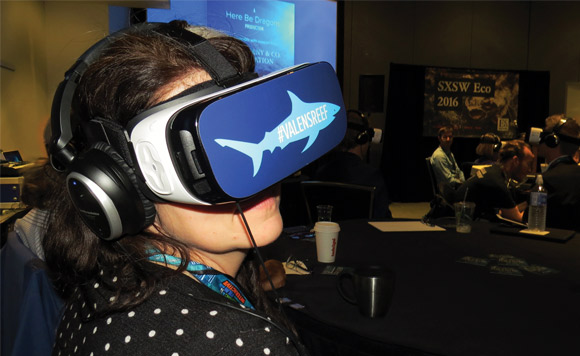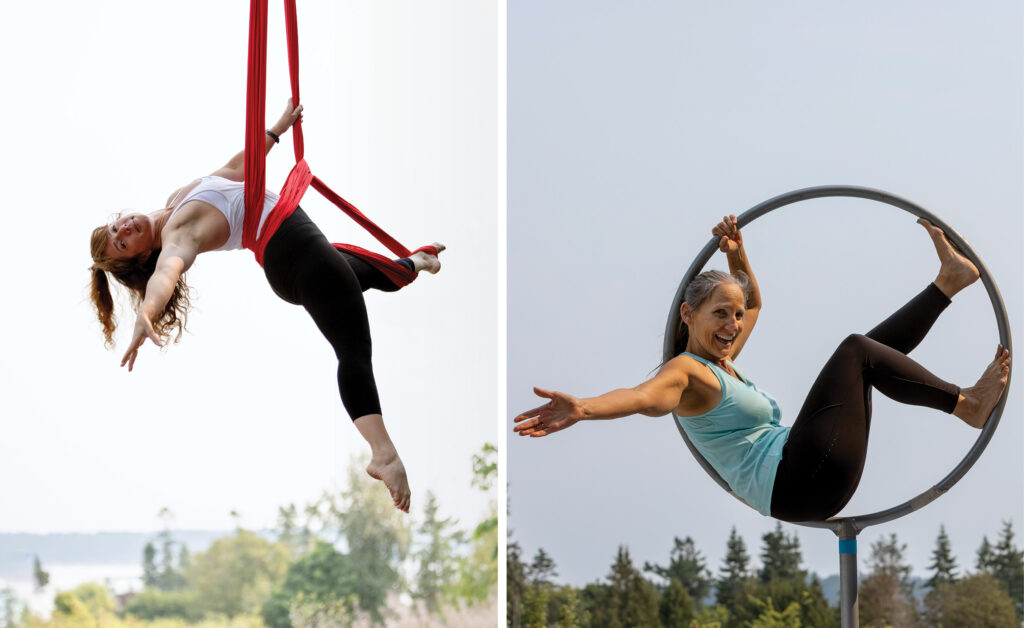by Tina Kelly –
Canada’s coastline exceeds 200,000 kilometres but a mere 25% of its population lives in coastal zones. Of that small percentage, how many are certified to dive? Weed out the non-swimmers, the underage, those with health, physical or financial limitations, and those like me, the “too nervous to do more than float about with a mask and snorkel,” and you have an incredibly shrinking number.
If only there was a way for everyone to dive, no matter the obstacles. Enter virtual reality (VR). Three-dimensional computer-generated worlds are not new innovation but access to 360-degree real-life video of real-life places is growing rapidly with advances in film and computer programs.
Last year, I had the opportunity to volunteer for the SXSW Eco Conference in Austin, Texas. Unlike its big brother, SXSW, which focuses on music, film and culture, SXSW Eco aims to “create a space for business leaders, policy makers, innovators and designers to advance solutions that drive social, economic and environmental change.” They had me at environmental change and free registration for volunteers.
I was one of the first 40 in line lucky to make it into the one – in high-demand and limited availability – Virtual Reality (VR) session. Kitted out with a VR headset and headphones, I was ready for my first dive at the click of a button. This inaugural dive took me to Bird’s Head Seascape, Indonesia, a crystal blue haven teeming with coral and shoals of vibrant fish. It took a moment to acknowledge this experience was to be more than focusing forward; after 40+ years of watching movies, my brain knew no other way to view film. Moving my head up, down and around changed the view of my surroundings: I could see behind me, below me to the bottom and up to the surface above me. It was remarkably real.
My seven-minute dive was completed before many others in the room. Any doubts regarding how real an experience VR films offer were cast aside as I witnessed the other “divers” react with a hand stretched out to touch a sea creature or a flinch of a shoulder to evade a school of fish.
Diving a far-flung exotic location was a magical adventure but the benefits of VR extend beyond the value of entertainment. Conservation International hosted my trip below the surface. Their film tells the story of a reef once damaged and overfished now restored and monitored – the former and the latter by the same local citizen. Aside from showcasing these good news environmental wins, VR has the potential to simply promote awareness through exposing the landlocked and non-divers to beautiful, fragile and unique underwater ecosystems. The hope: that having an immersive experience with real-life locations from anywhere in the world will not only educate but motivate citizens to conserve.
Watch Valen’s Reef (360 Video) Conservation International on YouTube; without the appropriate gear, it will not be true VR; however, right click your mouse to move the video and view 360 degrees. Moving the image will also display the English translation.




